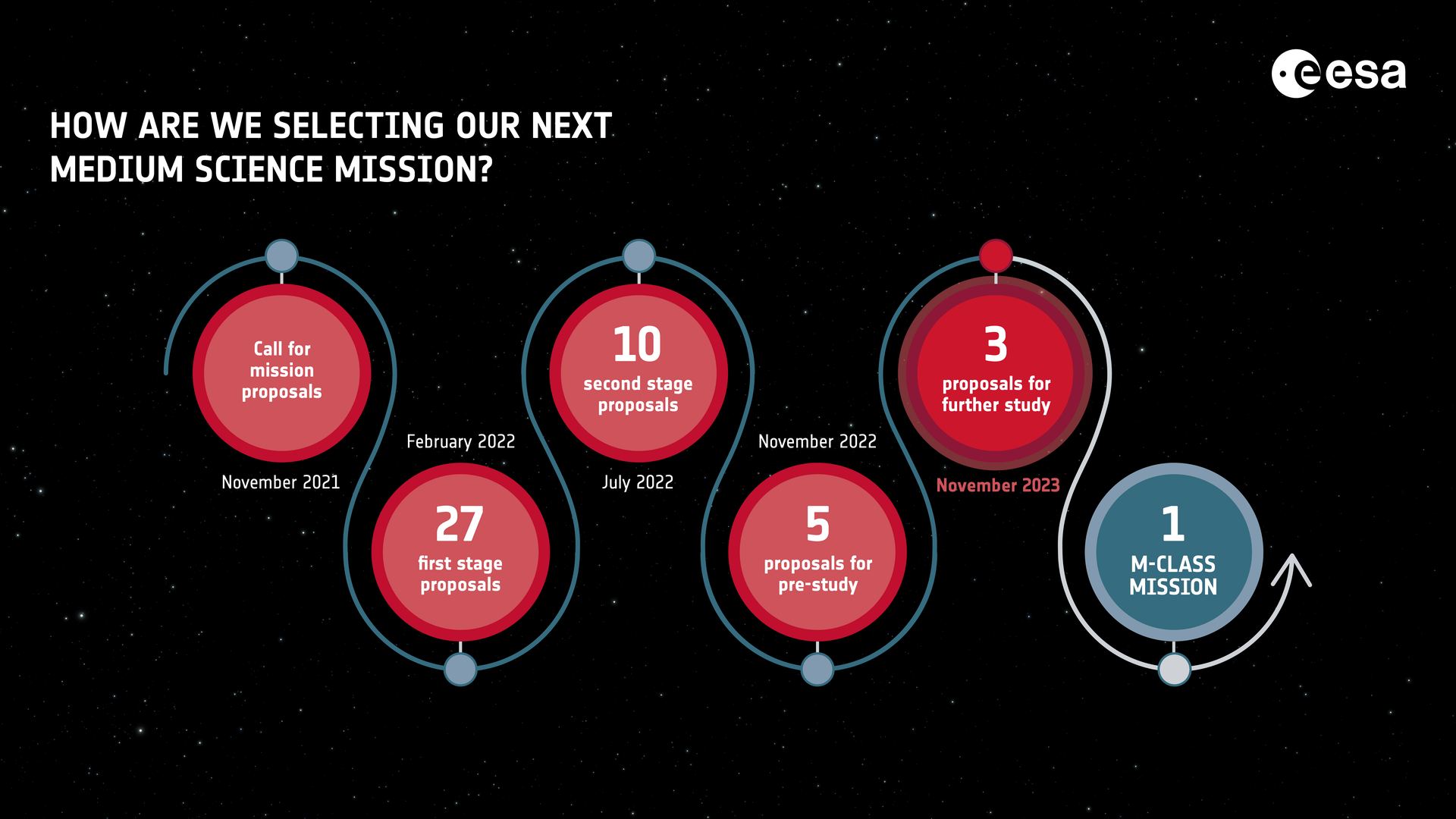The European Space Agency (ESA) is looking to the future and contemplating its next M-class (Medium) mission. These missions are crucial to the ESA Science Programme (part of the agency’s Science Directorate), which aims to provide the best tools to ensure Europe’s continued participation in space exploration and sustain its capabilities in space by fostering innovation, maintaining launch services, and spacecraft operations. The latest round began in December 2021, when the ESA called for proposals for the next M-class mission to launch in the mid-2030s.
In a statement issued yesterday (Wednesday, November 8th), the ESA announced that it had narrowed the list of candidates to three concepts. These include the twin M-MATISSE, the seven-spacecraft Plasma Observatory, and the THESEUS satellite. The final selection will assist ESA operations and research in space by studying the evolution and past habitability of Mars, exploring the plasma environment around Earth, or studying powerful transient events across the Universe. The final selection of one mission is expected to happen by mid-2026.
Continue reading “ESA Has a Difficult Choice: Study Mars, Earth's Magnetosphere, or Gamma-Ray Bursts”
